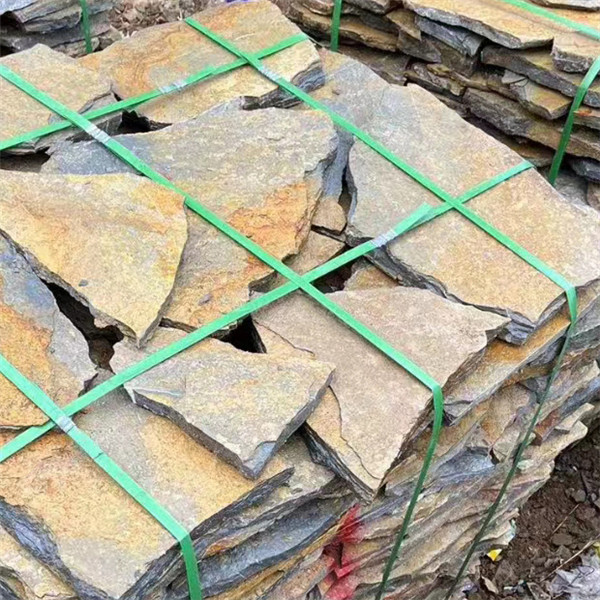Exploring the Beauty and Versatility of Cultured Mica Schist

Introduction
Cultured mica schist is a stunning natural stone that has been used for centuries in various construction and design projects. Its unique composition and aesthetic appeal make it a popular choice for both interior and exterior applications. In this article, we will delve into the characteristics, formation process, uses, and maintenance of cultured mica schist, highlighting its beauty and versatility in the world of architecture and design.
Characteristics of Cultured Mica Schist
Mica schist is a metamorphic rock that is primarily composed of mica minerals, quartz, and feldspar. The presence of mica gives the stone its characteristic shimmer and luster, making it a visually striking material. Cultured mica schist is formed through the metamorphism of existing rocks, where intense heat and pressure cause the minerals to recrystallize and reorganize into distinct layers. This process results in the unique texture and color variations that are characteristic of mica schist.
One of the defining features of cultured mica schist is its foliated structure, which gives the stone a layered appearance. These layers can vary in thickness and orientation, creating intricate patterns and textures that add depth and visual interest to any design. The colors of cultured mica schist range from earthy browns and grays to vibrant greens and blues, depending on the specific mineral composition of the stone. This natural variation in color and pattern makes each piece of cultured mica schist truly unique and adds a touch of organic beauty to any space.
Uses of Cultured Mica Schist
Cultured mica schist is a versatile material that can be used in a wide range of applications, both residential and commercial. Its durability, aesthetic appeal, and ease of maintenance make it a popular choice for flooring, countertops, wall cladding, and other architectural elements. In interior spaces, cultured mica schist can create a sense of luxury and sophistication, adding a touch of natural beauty to kitchens, bathrooms, and living areas.
One of the most common uses of cultured mica schist is in flooring applications. The stone's durable nature makes it ideal for high-traffic areas such as hallways, entryways, and kitchens. Its unique texture and color variations add visual interest to any space, creating a warm and inviting atmosphere. Cultured mica schist can also be used to create stunning countertops in kitchens and bathrooms, where its natural beauty and durability make it a practical and stylish choice.
In addition to flooring and countertops, cultured mica schist is also popular for wall cladding and accent features. The stone's natural shimmer and luster can be used to create focal points in interior spaces, adding a touch of elegance and sophistication. Whether used in fireplace surrounds, accent walls, or backsplashes, cultured mica schist can transform any space into a work of art.
Exterior applications of cultured mica schist include facade cladding, landscaping elements, and outdoor flooring. The stone's durability and resistance to weathering make it an ideal choice for outdoor projects, where it can withstand the elements and maintain its beauty for years to come. Cultured mica schist can be used to create stunning facades on residential and commercial buildings, adding a touch of natural beauty and sophistication to any architectural design.
Maintenance of Cultured Mica Schist
While cultured mica schist is a durable and long-lasting material, proper maintenance is essential to ensure its beauty and longevity. Regular cleaning and sealing can help protect the stone from stains, scratches, and other damage, preserving its natural luster and beauty. Here are some tips for maintaining cultured mica schist:
1. Regular Cleaning: To keep cultured mica schist looking its best, it is important to clean it regularly with a mild soap and water solution. Avoid using harsh chemicals or abrasive cleaners, as these can damage the stone's surface.

2. Sealing: Cultured mica schist should be sealed periodically to protect it from stains and moisture. Sealing the stone helps to maintain its natural shine and prevents it from absorbing liquids that can cause discoloration.
3. Avoid Heat and Sharp Objects: Cultured mica schist is heat resistant, but it is still important to use trivets or hot pads under hot cookware to prevent damage to the stone's surface. Similarly, avoid placing sharp objects directly on the stone to prevent scratches and dents.
4. Professional Maintenance: For deep cleaning and restoration of cultured mica schist, it is recommended to seek professional help. Square stepping stones for modern aesthetics can provide deep cleaning, sealing, and restoration services to keep cultured mica schist looking its best.
Conclusion
Cultured mica schist is a beautiful and versatile natural stone that adds a touch of elegance and sophistication to any design. Its unique composition, shimmering luster, and natural variation in color and pattern make it a popular choice for a wide range of interior and exterior applications. Whether used in flooring, countertops, wall cladding, or outdoor projects, cultured mica schist brings a sense of luxury and natural beauty to any space. By understanding the characteristics, formation process, uses, and maintenance of cultured mica schist, designers and homeowners can fully appreciate the beauty and versatility of this stunning natural stone.
